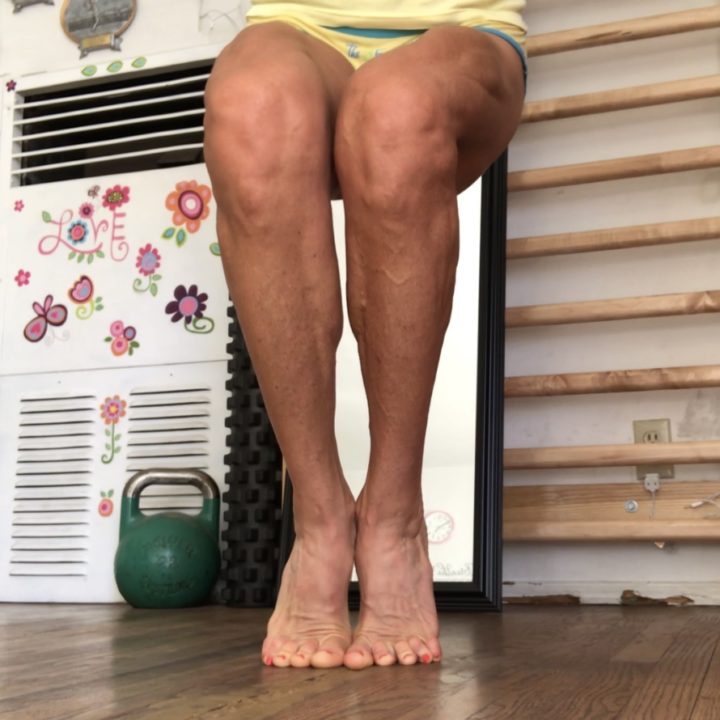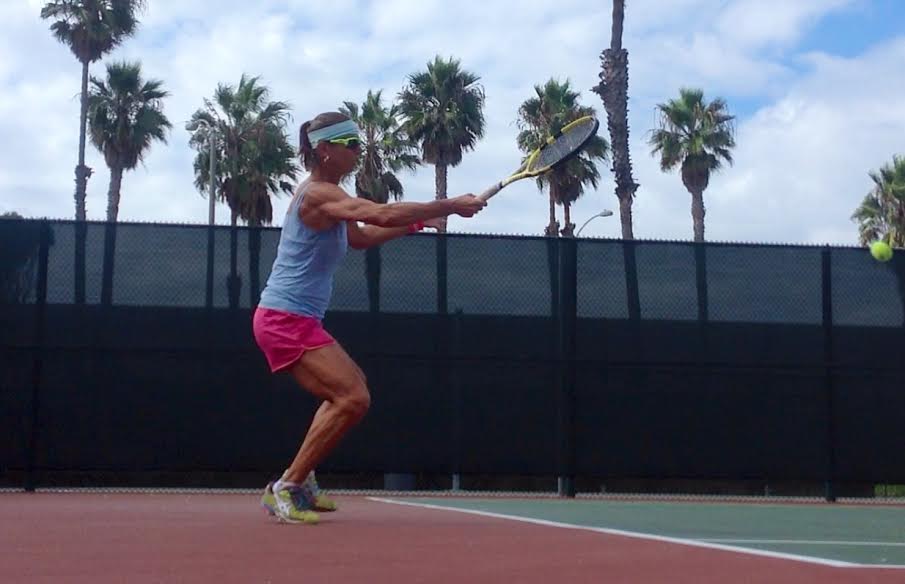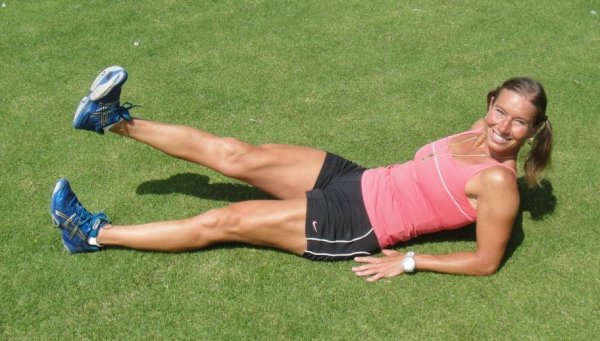Many overuse injuries in running, tennis, walking, or other intense sports are often accredited to weak glutes.
Very often it is true that our glutes (both Maximus and Medius) are too weak, but we also forget another crucial link in the kinetic chain of your gait: your toes.
Especially the big toe.
Let’s look at what happens when you walk or run so you can understand why your big toe is so important.
When the foot lands on the ground, all the bony structures start pronating (rolling inward) to mold and adapt to the surface. As soon as the foot molded itself to the ground, the pronation has to stop, so the foot becomes stiff enough to create a stable platform for a take-off (next step).
The anchor that blocks and stops the pronation movement is your big toe. When the big toe is not where it is supposed to be (deformed feet) or if it is not strong enough to do the job, then the pronation becomes abnormal.
You’ve heard the term of “over-pronation,” right? It is a popular term in the sports stores where they convince you that you need super expensive anti-pronation shoes or even specially molded shoe inserts.
However, the permanent fix is not in the special shoes or inserts (they don’t work anyway: read an article in NewYorkTimes ), but rather in a correctly functioning big toe.
The slacking big toe creates many compensations through your body because when the foot needs to be very stable, it’s completely unstable and something has to fix this. Other muscles jump in to add the stability, and they get overused from this extra work. And then they start hurting. The top few muscles that compensate for the lack of big toe work are gluteus medius, gluteus minimus, vastus medialis, peroneus longus, posterior tibialis and flexor digitorum longus. The muscles develop trigger points that hinder proper muscle contraction and function, and they also refer pain to other areas in the body.
For the curious about the trigger points, here is a great chart online.

A quick summary: big toe goes missing in action -> other muscles compensate and do the extra work -> the muscles develop trigger points -> trigger points refer pain into joints -> chronic injury syndrome appears.
Some of the “lazy big toe” future problems range from plantar fasciitis, heel pain, flat feet, back pain, night cramps, arthritis, fibromyalgia, sore and tight glutes, “sciatica” problem (or piriformis syndrome), and much more.
And all this can be prevented if you get a strong big toe. Your athletic life will be remarkable again. The following simple exercise for the big toe will also improve your balance, your feet strength, and even strengthen your quads.
Big Toe Raises
Do this big toe exercise preferably barefoot, but it’s ok to do it in the shoes as well. You will have a better feeling of how the big toe works if you are barefoot. (YouTube video here, if you cannot see the video below)
Big Toe Exercise 1
- Stand straight, with an engaged core, straight knees, and feet parallel
- Rise slowly up on the first metatarsal bone (where to toe attaches to the foot
- Put ALL pressure on the big toe, and the second toe. You will notice how much the feet will want to turn out. Don’t let them.
- Hold the top position for a couple of seconds, then put the heels down again.
- Repeat five times.
Big Toe Exercise 2
- Same as in exercise 1, come up on the two big toes, hold a few seconds, then slowly start squatting down. You don’t need to go entirely down. Half-squat is fine, but make sure the heals WON’T drop even a half-inch.
- Hold the bottom squat position where your feet are high up on the big toes for a few seconds, put the heels down, and straighten your legs and stand up.
- Repeat five times.
Big Toe Exercise 3
- Just like Round 2, but in reverse: squat down and then lift your heels as high as you can so you are on the first metatarsals. Put all pressure is on the big toe (or the two first toes).
- Hold for a few seconds and slowly start coming up, straightening your knees
- Hold the top position for a few seconds and put the heels down.
- Repeat five times.
I am going say that yet again (pardon me being so nagging): your feet WILL WANT to turn out. Don’t let them. Please, do force that Big Toe to do the work. That’s what the entire article is about, and that’s what you want to accomplish– to bring your Big Toe back to your athletic life.
Do this exercise daily for a couple of weeks. You will notice a tremendous difference in your movement soon. And your bodily aches may go away. Just like that.
Hello, Big Toe. Welcome back!!!
Do you want simple additional exercises for your feet to be healthy?
- Basic Feet and Ankles Exercises for Pain-Free Performance
- Spreading Toes for Enhanced Foot Function and Improved Performance
- Foot Massage to Release and Stretch Tight Hamstrings
- Fit and Healthy Feet for Better Tennis and Less Injuries
- Short Foot Exercise to Improve Performance and Prevent Injuries. Love Omega-3s.
.



